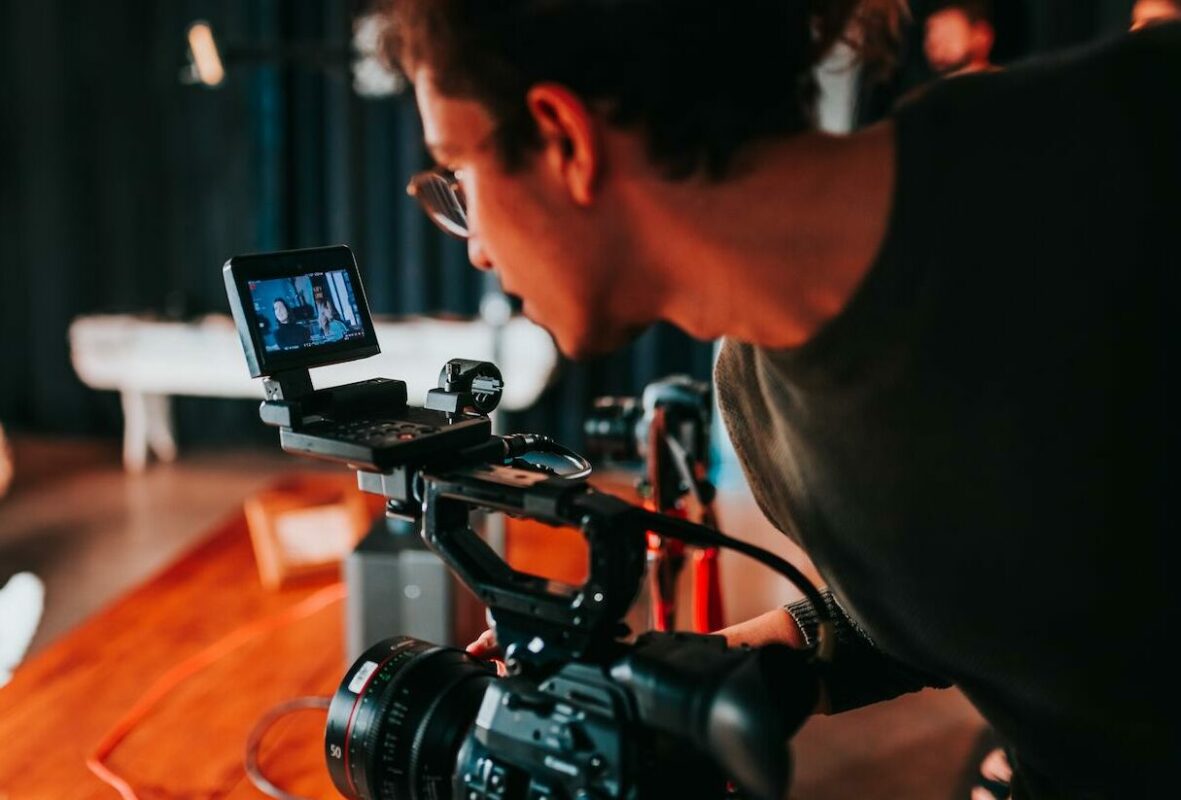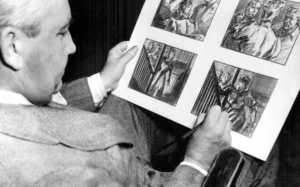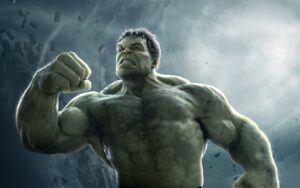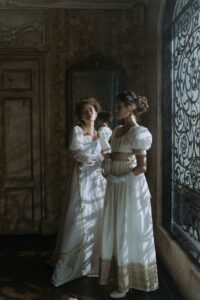
Movies have always been beloved by many because they transport us to enchanting realms of imagination and evoke strong emotions in a way that few other artistic mediums can. But there is a secret magic in the middle of the spellbinding stories and performances – the complex interaction of design and art. From the vivid hues that fill the screen to the carefully crafted sets, design and art play a significant role in molding the cinematic experience.
Cinema holds a unique place in our culture due to its power to take us to otherworldly realms, test our reasoning abilities, and lure us into engrossing stories. Whether it is an epic adventure or a touching drama, movies transport us to magical and familiar worlds, igniting our imaginations and making us feel things that stay with us long after the last scene has ended. The enchantment of cinema resides not only in its entertainment value but also in its capacity to motivate, test, and encourage observation. Subtly made to draw out feelings, establish a tone, and enrich the narrative experience, every classic movie displays a combination of design and craftsmanship behind its polished surface. Whether it’s the elaborate costumes that breathe life into characters or the breathtaking set designs that transport us to exotic places, design and workmanship play a pivotal role in crafting the enchanting worlds that captivate audiences. When you think about all the preparation that goes into making a film, the notion that the best ones have artistry in every frame rings true (Schrader 2).
The cultural importance of cinema has changed over the years as people’s views of it as an art form have developed, with the function of design and creativity being crucial. From the silent era to the rise of technicolor and computer-generated imagery, filmmakers have constantly challenged norms and reimagined the craft of storytelling by pushing the limits of what is possible on screen via design and creativity. When movies first came out, many thought they were shallow forms of entertainment that couldn’t compare to more established art forms. Audiences’ perceptions of cinema shifted, however, as directors tried new approaches to telling stories. Many people now consider movies to be valid forms of art, and the influence of films on popular culture is undeniable.

I will shed light on the role of art and design and their significant influence on the films we love by investigating how they create mood, elevate performances, and engross viewers in the enchantment of narrative. The intricate workings of design and creativity, and the crucial role they play in creating an engaging cinematic experience, are our goal in this investigation. An important part of establishing the mood and tone of a film is the use of visual aesthetics, color theory, and set design. A film’s mood is the general sensation it conveys, whereas its tone is the story’s attitude or emotional stance. The visual presentation of a film relies on these aspects, which impact the way people perceive and understand the story. According to Plantinga, “…An important part of establishing the mood and tone of a film is the use of visual aesthetics, color theory, and set design.” Set designers take great effort to pick colors that represent the narrative’s atmosphere and themes (Schrader 2). Everything from the subdued tones of a barren terrain to the bright colors of a crowded city contributes to a detailed and engrossing setting that transports viewers to the drama. Whether it is the warmth of a bright day or the coolness of a moonlight night, a film’s color palette may inspire a broad variety of emotions. For example, in Little Women (2019), each of the sisters has a specific color they are always wearing, this is to portray each of their character traits, personalities and even desires. In the same movie, the director uses cool toned shots for scenes in the present and warm, toned shots for scenes that take place in the past, to portray the past as a nostalgic moment in time.
Set designers take great effort to pick colors that represent the narrative’s atmosphere and themes. Set designers and artists work together to create visually enchanting and enduring environments, which are often the defining characteristics of memorable sequences. Whether it’s a gilded ballroom or a rundown cottage in the woods, these locations create the stage for extraordinary moments that viewers will remember long after the credits roll. As an example, the Barbie film in 2023 immerses viewers in a whimsical Barbie dreamland. The vibrant pink hues adorn every corner, while Barbie’s iconic dreamhouse takes center stage. Throughout the film, we are transported to various landscapes that evoke a sense of nostalgia, reminding us of the familiar world of our childhood. What sets this movie apart is the remarkable absence of green screen technology. Instead, the backdrops and sets were meticulously crafted to immerse viewers in the narrative.
Every shot in a film is carefully planned to make the audience feel a certain way. The changing function of production designers in establishing connections between cinematic visual components is shown by the historical development of production design (Schrader 2). Whether it’s heightening the tension of a conflict or setting the tone for a romantic interlude, set designers are responsible for creating visually beautiful settings that also fulfill the story’s requirements. The set designer’s job is to make the film’s setting seem real and immersive by attending to every detail, such as the wall texture and furniture arrangement.
Cinematic experiences also rely on the seamless integration of sound and vision to transport audiences into the tale via a variety of senses. The use of sound, whether it’s a film music or the background noise of a busy metropolis, enriches the visual narrative by providing richness and depth. A scene’s tone and ambiance may be enhanced with the use of well-crafted sound effects, such as a lion’s roar or the wind rustling leaves. As seen in the Avengers movies, the powerful sound of Thor’s hammer and the fierce roar of the Hulk act as distinct auditory elements, elevating the immersive storytelling and immersing viewers in the midst of the Avengers’ valiant battles.

Directors have a lot of control on the audience’s emotional reaction and how much they become absorbed in the film’s universe via the use of sound design. Sound design is important for increasing emotional involvement in visual storytelling. By studying the relationship between sound and image, we may gain a greater understanding of how sound design enhances the immersive experience of cinematic tales (Marcello 3).This interplay of sound, visual, and performance emphasizes the multifaceted aspect of narrative, capturing viewers on both emotional and sensory levels.
Costume design in films is also a huge part in visual storytelling, although underestimated by some viewers, but a big part in shaping characters, adding to the narrative and setting the tone and time period. Costume design is a meticulous process that requires careful planning, deep research, collaboration and a lot of creativity in order to bring a movie’s characters to life. The attire of a specific character can effectively communicate a character’s personality, social status, motivations and desires. For instance, historical dramas such as Pride and Prejudice (2005) showcase the fashion of the time period but merges it with the characters’ societal status and cultural expectations. Costumes should be particular in each film, because they all convey different meanings, “Different types of film and television works need to express different themes, emotions and atmosphere, therefore, for different themes of film and television works, their costume design solutions should also be different” (Yin 58). Costumes play a big part in setting the scene and the ambiance of a film, whether it’s set in a futuristic dystopia or a romantic time period, the attire has to be meticulously picked out and created to help the storytelling of the movie, like in the The Great Gatsby (2012) where the audience is transported into the Roaring Twenties via flapper attire, rich golden hues of the clothing, and expensive looking jewelry.
In addition, costumes can play a big part in character development, evolution of the character and even inner struggles. For example, in Iron Man, Tony Stark starts off as a greedy, rich businessman that build weapons. Throughout the movie and creation of the Iron Man suit, he puts his greed and ego to the side and turns into a superhero. His suit is a symbol for a change in character and personal growth. As supported by Yin, “Through such a simple and generous set of clothing, the personality characteristics of the protagonist can be well presented, and also pave the way for the development of the plot later” (Yin 60). Costume design does not only aid in character development and storytelling but in symbolism embedded throughout films. Symbolism is crucial to films because it helps them portray ideas and emotions in way that acting, and script does not. The attire in Black Panther beautifully connects with the vibrant and technologically advanced country of Wakanda with the more subdued setting of the outside world, symbolizing the clash between tradition and modernity. Furthermore, costume design helps in shaping the practical aspects of filmmaking, including the way actors move and perform. Well-made costumes improve the actor’s movement and comfort but help them to embody their characters with authenticity. Movies that are based on real people and historic moments may have to recreate specific outfits that the figure wore throughout their life, the actors that play them need the help of costumes to portray them with accuracy and honor. As mentioned earlier, costume design requires a lot of research to accurately portray the vision of the director. Catherine Martin, Academy Award winner and costume designer for Elvis (2022), mentions “There is constant detective work to unpick history and understand what Elvis wore, how he wore it, when he wore it, how he was wearing it, and what the people around him were wearing. Understanding how history and clothes intersect in any given individual and fundamentally understanding the character through clothes is really what drives me as a costume designer.”

Collaboration between directors, designers, and performers is often crucial to the success of a film performance. Lighting, stage design, costume design, and other design decisions provide the environment and context that actors need to embody a character. A well-lit room, for instance, might evoke feelings of warmth and openness, whilst a poorly lit one can evoke feelings of mystery and intrigue. Similarly, an actor’s choice of clothing may serve as a visual clue that informs their performance by establishing the character’s personality and past. Ultimately, the value of design and originality in movies cannot be overstated. Throughout cinema history, every aspect of narrative, including visuals music, and acting, has been deliberately crafted to create a compelling and immersive experience for viewers.
After carefully considering the major point presented in this research, it becomes clear that originality and inventiveness play an important part in the art of cinematic narrative well beyond mere embellishment. Using immersive landscapes, intriguing soundtracks, and complex characters, filmmakers may take audiences to astonishing worlds of imagination and emotion. They use the power of design and imagination to create an engaging experience.

The presence of design, art and innovation in cinema have a deeper purpose and meaning beyond just providing entertainment. They cause and inspire thought-provoking questions, they encourage us to examine our perspectives, our surroundings and understanding of the world. Through the power of film, we can explore the complexities of human emotions, perspectives and connections that go beyond language, culture and time. The essence of cinema is storytelling, capturing stories of our past, of futures that will never be and different aspects of human life. The creation of film is more than just entertainment, or visual aesthetics, it is about telling stories in a way that will transport audiences into the world filmmakers have created. As an audience, we are fortunate to view films and movies that are not only thought-provoking but that push the boundaries of cinematic innovation and transform storytelling for future generations.
Bibliography:
Khatchadourian, Haig. “Film as Art.” The Journal of Aesthetics and Art Criticism 33, no. 3 (1975): 271–84. https://doi.org/10.2307/428353.
Marcello, Starr A. “Performance Design: An Analysis of Film Acting and Sound Design.” Journal of Film and Video 58, no. 1/2 (2006): 59–70. http://www.jstor.org/stable/20688516.
Plantinga, Carl. “Film Theory and Aesthetics: Notes on a Schism.” The Journal of Aesthetics and Art Criticism 51, no. 3 (1993): 445–54. https://doi.org/10.2307/431516.
Schrader, Paul. “Production Design.” Film Comment 52, no. 2 (2016): 58–60. http://www.jstor.org/stable/43824943.
Yin, F. (n.d.). Analysis of the Role of Costume Design in Shaping the Characters of Film and Television. Francis Press. https://francis-press.com/uploads/papers/DBGvVT9urK2VC9i6bKGbChXJcI2Yua9qREo1kVyF.pdf
Tags from the story
art
design
film
Nomination-Humanities

Mariana Chamorro
My name is Mariana Chamorro, I am from Managua, Nicaragua and I’m a junior majoring in Communication Studies and minoring in Visual Design Communications and Psychology.
Author Portfolio PageRecent Comments
Martin Martinez
Color grading is a technique I’ve noticed and appreciated more as I watch movies. There are multiple scenes in Dave Chappelle’s “Whiplash” that use a yellow grading to emphasize the color of brass instruments. There are others where colors are used to convey emotion. In “Ratatouille” for instance, bland colors are used to portray mundanity, contrasted later with warm colors to portray the artistry of cooking.
26/04/2024
5:09 pm
Naya Harb
Every little detail in movies is important to analyze. The costumes, the sound, the music, the animation. They are all a big factor to create an outstanding outcome of a film. This article is very interesting and addresses subjects that are sometimes overlooked at when watching movies. I love the details that you expanded on! Great work Mariana and congratulations on being nominated!
26/04/2024
5:09 pm